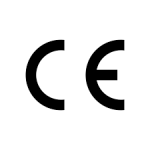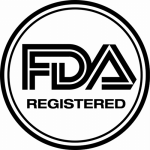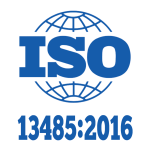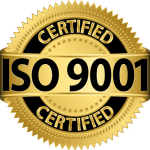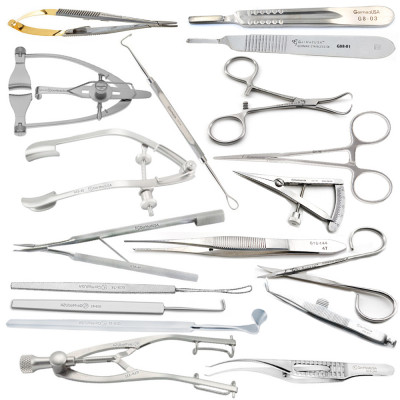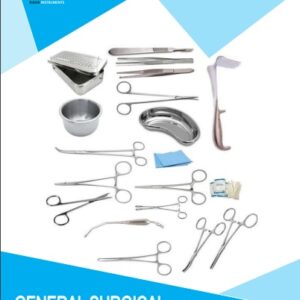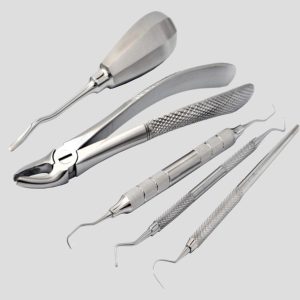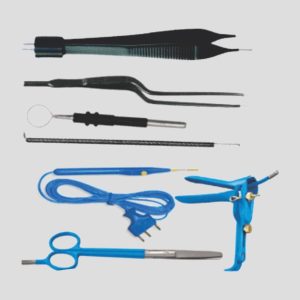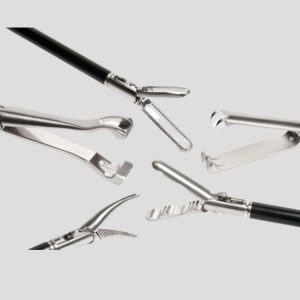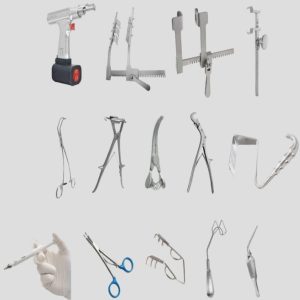The possibility for infection to arise in veterinary patients after surgery has long been a source of concern. This is why training in the sterilization of surgical instruments Pakistan is required for veterinarians and their assistants. According to some reports, 13% of surgical tools in a small sample that was immersed in cold, sterile liquids showed signs of opportunistic pathogens and other microorganisms. This generally supports the idea that infection is a possibility after surgery. Orthopedic surgical operations, femoral head osteotomy, lateral sutures, and patellar luxation should all be treated with high-quality medical sterilization techniques.
What is medical sterilization?
In addition to other surgical equipment, orthopedic drills and saws are frequently sterilized prior to use. Using an autoclave to disinfect and sterilize surgical instruments and supplies is a simple process. Place the object that has to be sterilized directly into the autoclave chamber. Next, compressed saturated steam at 121 °C (250 °F) is poured over the autoclave’s contents. Throughout the medical sterilization process, temperatures higher than the boiling point of water are used. This operation could take anywhere from twenty to ninety minutes. This will be depending on the size of the autoclave chamber and the sterilized objects.
Thus, autoclaves are a common sight in most veterinary clinics. Hence, the models that are typically in use are tabletop devices about the size of a microwave. These clinics have to sanitize miniscule amounts of medical equipment as a result. The procedure might therefore be more leisurely and drawn out. An excellent substitute is to use additional medical sterilization methods, including sterilizing the covers for surgical tools.
It is essential to sterilize surgical instruments: But why?
A surgical instrument or piece of medical equipment normally comes into contact with sterile tissue or mucous membranes on a patient. Therefore, it has a high potential to introduce pathogenic bacteria and perhaps cause infection. Inadequate sterilization and disinfection of medical sterilizing equipment increases the risk of disease due to the compromise of host defenses. Eliminating residual blood, mucus, saliva, pus, and foreign or dirt particles could potentially pose a risk to the surgical patient the physician is about to operate on.
How should medical irradiation be sterilized?
The risk of infection transmission must be taken into account while choosing between medical sterilization and disinfection. Medical equipment comes into contact with sterile tissues. This will be including respiratory treatment equipment, anesthetic equipment, endoscopes, and portions of the laryngoscope. This also counts “semi-critical” equipment that comes into contact with mucous tissues or skin that isn’t intact, needs to be sterilized.
Surgical instruments that might puncture soft tissue or bone include bone chisels, extraction forceps, surgical burs, periodontal scalers, and scalpel blades. For this reason, surgical instruments should be sterilized after every use. Sterilizing surgical instruments will reduce the quantity of unsterilized bacteria or the pathogenic burden on a surface. It will prevent corrosion in expensive, extremely precise equipment with intricate moving parts. Plus, it takes away the optimal conditions for bacterial proliferation. Thus, it guarantees the safe transit of equipment that needs to be assembled and packed in order to be sterilized or disinfected. With complete sterilization and disinfection, the safe use of invasive and minimally invasive medical equipment may be guaranteed.
How to sanitize surgical tools in a veterinary environment?
Thorough training regarding the process of sterilizing surgical instruments Sialkot is required for veterinary personnel. A surgical instrument may not be completely sterile for up to 10 hours after the completion of procedures. Before a surgeon may use a medical equipment again, it has to wait for a long time. Cleaning surgical equipment properly after use is the first step in guaranteeing that they are sterilized properly.
After the surgery is over, give each piece a thorough cleaning to remove any dirt and biological material within 30 minutes. The best way to clean an instrument is to put it under flowing water individually. Just hold onto it, then open and close it while the water runs over it. Use a brush with stiff plastic bristles. Just submerge it in distilled or demineralized water with a neutral Ph. This will help to make sure all impurities are released and fall off. Well, this stops materials that contain protein from attaching to one another.
Spray lubricants on all of the surgical instrument’s surfaces, including the joints. This will help if cleaning causes the instrument to become stiff when trying to open and close. When two metal surfaces come into contact with one another, contaminants like mineral deposits usually cause corrosion, which results in stiffness. Using detergents with enzymes during the sterilizing procedure can harm the tools. Just avoiding doing it so. You should be knowing that tungsten and benzium ammonium chloride have poor chemical interactions. Do not use any solution containing this compound if the instrument being sterilized contains tungsten.
It is important to check and make sure that all surgical equipment’s are clean and operating properly. This is necessary before proceeding to the last stage of sterilization. Starting the sterilizing autoclave procedure with each tool facing upward in the open position is compulsory. This enables the steam to come into contact with every surface of the surgical tool. The ideal cycle length, pressure, and temperature for any kind of surgical instrument should be definite in the manufacturer’s instructions. To keep each tool from deteriorating after sterilization, dry it right away without using dry heat. After being taken out of its packaging, every gadget should be stored in a dry, warm place.
Conclusion
It is definitely not what you want when your surgical staff makes mistakes. It is important to properly sterilize the surgical instruments in order to achieve that. There are various methods for sterilizing surgical equipment, but the two most popular ones are wet heat and dry heat sterilization.
Surgical instruments suppliers Pakistan occasionally employ disposable surgical equipment to prevent such issues. However, not all surgical instruments are offered in a single-use format. It is vital that you follow the right procedures for sterilizing equipment and that you approach your work with the utmost professionalism.

